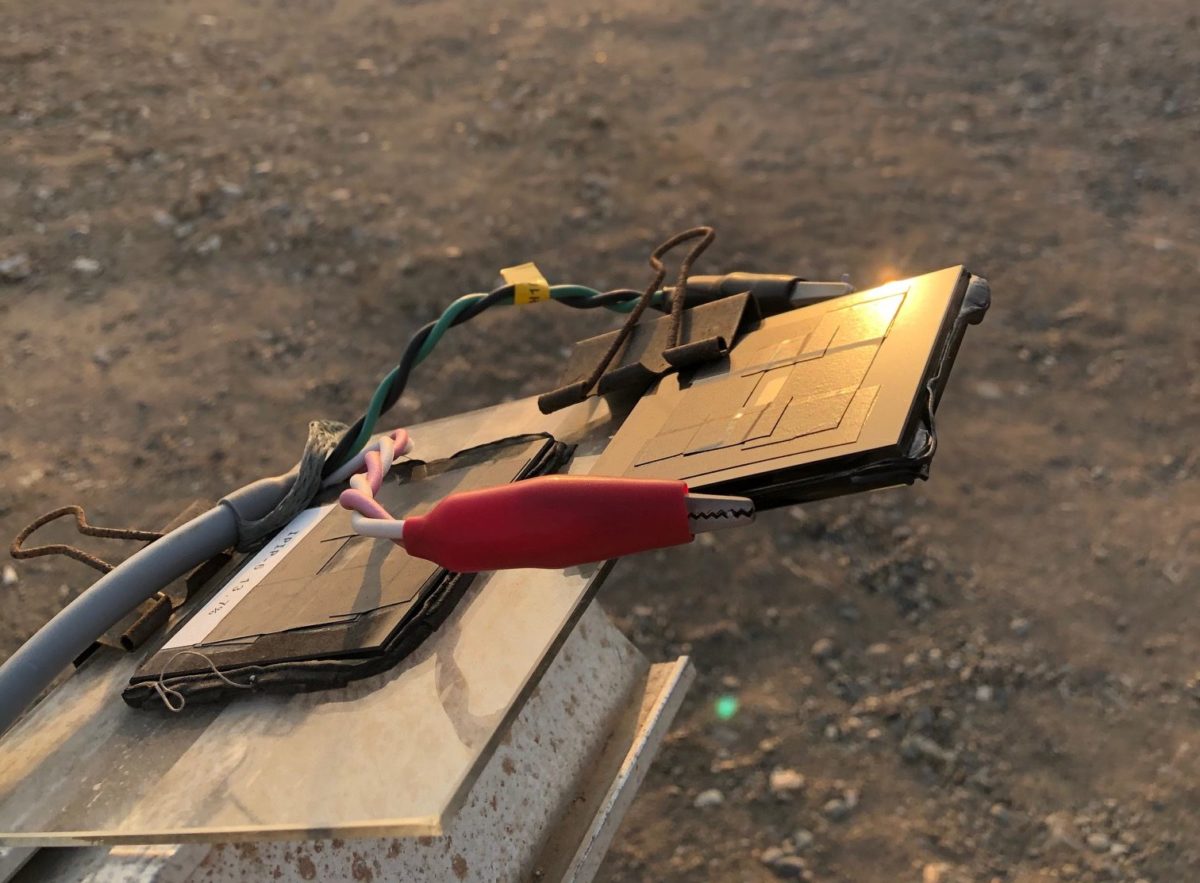Researchers from King Abdullah University of Science and Technology (KAUST) in Saudi Arabia, the University of Toronto, the University of Bologna, and Germany's Karlsruhe Institute of Technology have jointly built a bifacial solar cell with a two-terminal (2T) architecture based on perovskite and silicon, in order to achieve a power conversion efficiency of more than 25%.
They experimentally fabricated the tandem device with a silicon heterojucntion (SHJ) bottom cell, textured on both sides, and a perovskite top cell with a p-i-n layout, which was deposited by solution processing.
“To increase the bifaciality, the SHJ rear contact was optimized to combine a minimized series resistance and maximal albedo coupling into the crystalline silicon cell,” the academics said.
The silicon solar cell is a silicon heterojunction, with textured surfaces designed to accommodate the perovskite top cell. The rear transparent electrode was optimized to collect as much albedo as possible, while preserving good electronic properties.
“For the top cell, the perovskite is deposited via solution, which allows for a more practical control of the bandgap, all the other layers are deposited via vacuum deposition, in respect with the industrial standards,” researcher Michele De Bastiani told pv magazine.
The scientists developed the cell with five different perovskite bandgaps of 1.59, 1.62, 1.65, 1.68, and 1.7 eV, which was achieved by altering the iodide-to-bromide ratio in the perovskite crystals. This resulted in a higher open-circuit voltage.
“The tandem short-circuit current density reaches a maximum at a perovskite bandgap of 1.68 eV, which corresponds to the optimal current matching between the subcells of conventional tandems discussed here, and results in an independently certified power conversion efficiency of 25.2%,” the researchers explained.
With a perovskite bandgap lower than 1.68 eV, the researchers were able to use the albedo to compensate for the lack of photons in the silicon subcell.
“In turns, this results in more performing bifacial tandems, above the conventional configuration,” De Bastiani added.
Popular content
At a testing field in Saudi Arabia, the researchers analyzed the performance of both the conventional and bifacial versions of the device under three different specific albedos consisting of concrete, synthetic grass, and a white background.
“For each condition, we recorded the J–V characteristic with a time interval of ten minutes during a measurement time of one hour,” they said.
They found that the bifacial cell outperformed its monofacial counterpart under all conditions, especially with concrete. The scientists also measured the two kinds of cells in a test field for a week in Saudi Arabia and Germany, in order to study their performance in different climate regions.
“In both sites, the bifacial tandem performed significantly better than the monofacial one, particularly during midday,” the academics said.
They also performed energy-yield simulations to assess the performance of both bifacial and monofacial tandems for different perovskite bandgaps and albedo conditions. They did this under realistic outdoor conditions at locations representing two different climates, in Phoenix and Seattle. The measurements showed that the bifacial devices had power yields that were 32% higher in Seattle and 37% higher in Phoenix.
De Bastiani said the bifacial configuration does not require additional sophistication or higher costs.
“At KAUST we are now looking at scaling the technology towards the industrial standards of the silicon technology, namely six inches wafers,” De Bastiani said. “Tandem will be more expensive than conventional silicon, but the higher cost of the single cell will be better compensated by the higher efficiency, in the end the tandem will payback the cost more favorably than conventional silicon cells.”
The researchers described the solar cell in “Efficient bifacial monolithic perovskite/silicon tandem solar cells via bandgap engineering,” which was recently published in Nature Energy.
This content is protected by copyright and may not be reused. If you want to cooperate with us and would like to reuse some of our content, please contact: editors@pv-magazine.com.



2 comments
By submitting this form you agree to pv magazine using your data for the purposes of publishing your comment.
Your personal data will only be disclosed or otherwise transmitted to third parties for the purposes of spam filtering or if this is necessary for technical maintenance of the website. Any other transfer to third parties will not take place unless this is justified on the basis of applicable data protection regulations or if pv magazine is legally obliged to do so.
You may revoke this consent at any time with effect for the future, in which case your personal data will be deleted immediately. Otherwise, your data will be deleted if pv magazine has processed your request or the purpose of data storage is fulfilled.
Further information on data privacy can be found in our Data Protection Policy.